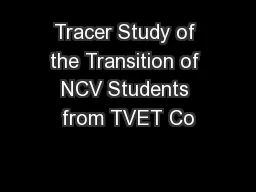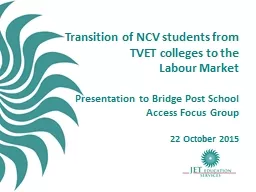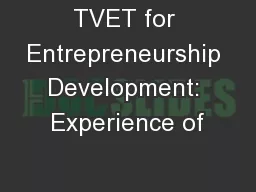PPT-Tracer Study of the Transition of NCV Students from TVET Co
Author : celsa-spraggs | Published Date : 2017-10-02
23 November 2016 Background NCV courses in TVET colleges TVET colleges formally constituted in 2002 Sector comprises 50 new FET colleges with 165 campus sites
Presentation Embed Code
Download Presentation
Download Presentation The PPT/PDF document "Tracer Study of the Transition of NCV St..." is the property of its rightful owner. Permission is granted to download and print the materials on this website for personal, non-commercial use only, and to display it on your personal computer provided you do not modify the materials and that you retain all copyright notices contained in the materials. By downloading content from our website, you accept the terms of this agreement.
Tracer Study of the Transition of NCV Students from TVET Co: Transcript
Download Rules Of Document
"Tracer Study of the Transition of NCV Students from TVET Co"The content belongs to its owner. You may download and print it for personal use, without modification, and keep all copyright notices. By downloading, you agree to these terms.
Related Documents














